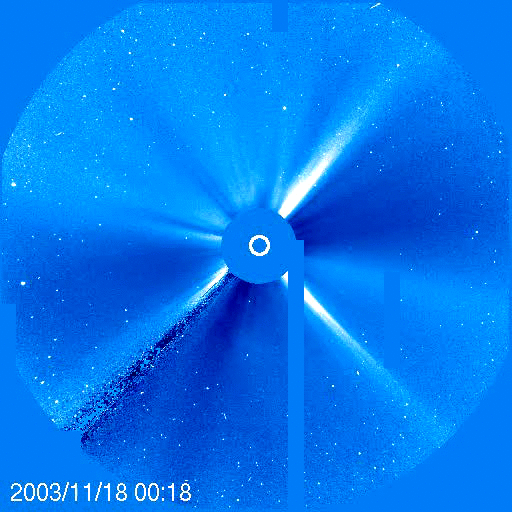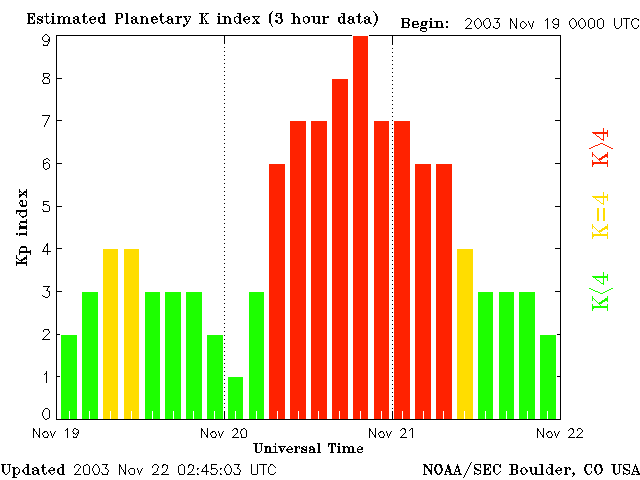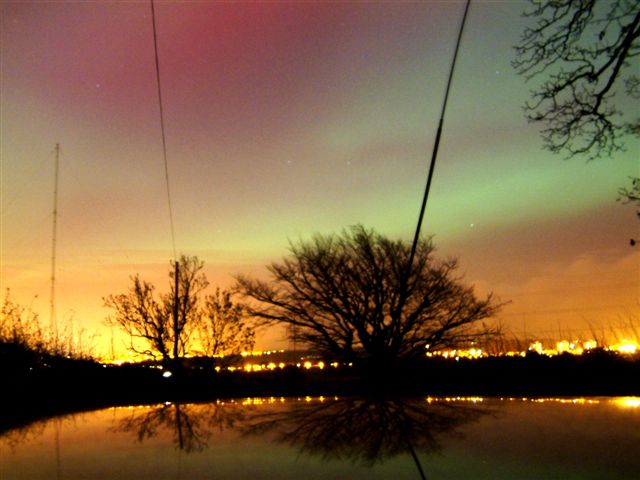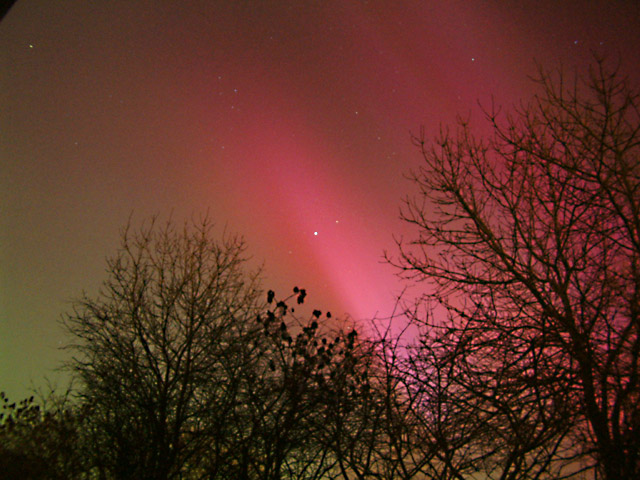On November 20, polar light was visible, even at low latitudes!
Last week we expected some firework from the returning monster sunspot groups of previous rotation. The expectations were only partially filled in. The week started promising enough. From November 17 to November 20, 10 M-class flares were counted, all coming from sunspot group 090 (NOAA 10501). On November 18, the SIDC software CACTUS (Computer Aided CME Tracking), detected a full halo coronal mass ejection (CME) in LASCO images. The CME was associated with the M3.2 and M3.9 flares, which were closely related in space and time through a complex activity process of sunspot group 090.

The arrival, around 07:45 UT on November 20, of the shock front of the powerful halo CME triggered a severe geomagnetic storm. In ACE and SOHO/CELIAS data, the signature of this arrival was clearly visible. The solar wind speed jumped suddenly from 430 to 750 km/s. The horizontal component of the interplanetary magnetic field was even measured to be -60nT. NOAA reported estimated Kp indices of 9 as seen on the figure above. Other ground based stations like Izmiran measured extreme disturbances of the geomagnetic field (K indices of 9).

We received some very nice pictures of the aurora!

Long Calderwood, Scotland, taken by Ewan Kane

Belfast, Northen Ireland, taken by Alan Fitzsimmons





